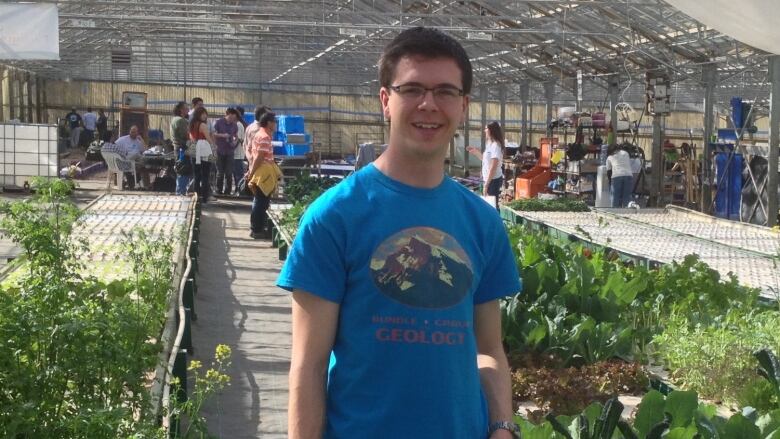Aquaponics a growing trend in urban agriculture
Small setups let you grow fresh tomatoes and tilapia year-round

For most people, urban agriculturemight mean a small vegetable garden in the backyard. But early adopters of aquaponics are taking things a step further,investing start-upcosts of about $300 andusing the food production system to grow vegetablesandharvest fresh fishin their homes.
Calgary-based Scott Weir, founder of Growing Gardeners Aquaponic and Urban Farms, travels the continent speaking about aquaponics. He calls it the mergingof aquaculture the raising of fish, usually edible fish and hydroponics, or the soil-less growing of plants.
"When you combine the two," he says, "you have a food producing system that's 95 per centmore efficient on water than traditional agriculture. You also have much higher density, and it's organic by nature."

"So the fish...they poop into the water and produce waste. That waste is converted by micro-organisms into nitrogen and other minerals and nutrients," Weir explains. "The plants take that up, they clean that water for the fish, and then the clean water goes back to the fish."
Tomatoes, cucumber, lettuce
Aquaponics is a technique that goes back centuries, but with the current interest in local and organic food, it's being touted as a viable way to farm. Non-root vegetables, like tomatoes, cucumber and lettuce, can thrive in an aquaponic system, while edible fish, like tilapia, can be raised to be eaten in the same setup.
It's an idea that's really starting catch on in North America especially in the U.S., where large-scale commercial facilities have popped up in Chicago, Indiana and Delaware.
And Weir says small-scale aquaponic setups are becoming more and common in people's homes. All you need is a fish tank, some fish, a small spot to grow your produce,some pumps to aid in the water exchange, and a pH monitor to make sure the water stays in balance.
"One setup I had in my home...was producing enough food to feed me and one other person continually. So being able to grow a large part of your own food in your home or garage or whatever is a big deal, and it can reduce the cost of food as well, especially if you're comparing it to buying organic," Weir says.
With interest in aquaponics on the rise, Weir hasdone some consulting for an up-and-coming large-scale aquaponics facility in Ontario and a few smaller, privately owned operations in Alberta.
But those facilities are already running into some unexpected setbacks. Provincial law in Alberta states you have to get a commercial fishing license to use any fish even common goldfish for farming purposes, even in your own home.
Before getting too far into your own aquaponics setup, Weir suggests checking with your local provincial fisheries branch first.












_(720p).jpg)


 OFFICIAL HD MUSIC VIDEO.jpg)
.jpg)



























































































